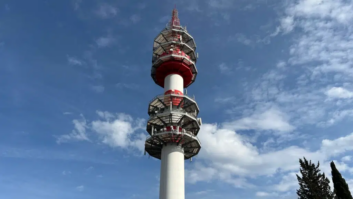SYDNEY, New South Wales — The Australian government expects to develop a DAB roll-out policy for regional broadcasters by January.

Last year’s commercial launch of DAB+ brought together rival stations for a pan-industry broadcast in Sydney and other metro areas. Photo by Nick Piggott. Used under a Creative Commons license. Large-market Australian radio broadcasters in Sydney, Melbourne, Brisbane, Perth and Adelaide began turning on their DAB+ transmitters in July of last year.
AM and FM analog services are to remain on-air for the foreseeable future.
According to the 2010 Digital Radio Industry Report from Commercial Radio Australia, there are 450,000 people listening to digital radio in this country, amounting to 3.7 percent of radio listeners.
The CRA report details the reasons why Australians are buying DAB+ receivers. Seventy-one percent did so to get better sound quality, while 61 percent were attracted by features such as on-screen information, easy tuning, pause and rewind.
Fifty percent of those surveyed also wanted access to DAB+ -only stations. There are 16 so far in Australia; counting AM/FM simulcasts 65 DAB+ stations are on the air.
Forty-two percent of respondents were typical early-adopters, saying that they wanted DAB+ because they like owning the latest technology, and 20 percent saw DAB+ as a remedy to poor analog AM/FM reception quality.
The best news, according to Russell Stendell, head of technology and digital radio planning at the public-service broadcaster Australian Broadcasting Corp., is that 80 percent of digital radio owners would recommend it to a friend and 40 percent of people in the capital cities indicated they would purchase a receiver in the next 12 months.
“Seventy-five percent of people are prepared to pay up to about $170 (U.S.) for a receiver and, with the average price at about $126 — and falling — they are already seen as reasonably priced,” Stendell said.
In contrast to earlier Eureka-147 DAB-supporting nations, such as the United Kingdom and Canada, Australia has adopted DAB+, the new standard that is not fully backwards compatible with the original DAB standard. DAB+ receivers can decode DAB signals, but older receivers need to be replaced or upgraded to handle DAB+ transmissions.
“DAB+ uses the aacPlus [MPEG-4 HE-AAC v2] audio codec to provide more efficient audio compression and so enable more stations — up to three times as many — within the same bandwidth as original MPEG-1 Layer II DAB,” Stendell said.
Stendell said that WorldDMB developed the DAB+ standard at the urging of the Australian radio industry because Australia does not have enough VHF band III spectrum to accommodate all its existing stations — let alone provide any new stations — using the original DAB standard.
Australian digital radio is a mix of simulcasts and unique standalone stations. “Although there is no requirement on radio broadcasters to simulcast their analog services, it appears that all licensees are doing so,” said Kristy Eulenstein, senior policy advisor with the Digital Transition Division of the Australian Communications and Media Authority.
“The majority of licensees are also providing digital-only services including ‘pop-up’ or ‘event-based’ stations,” Eulenstein said.












